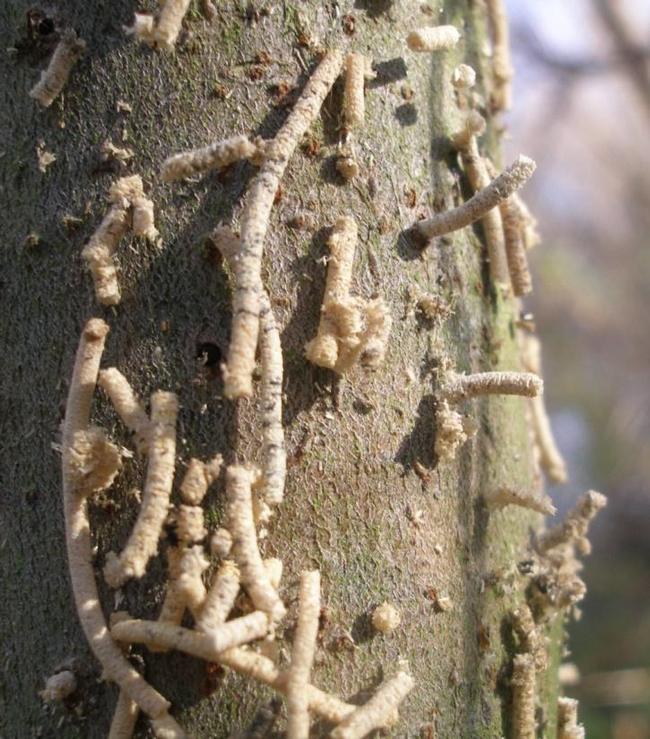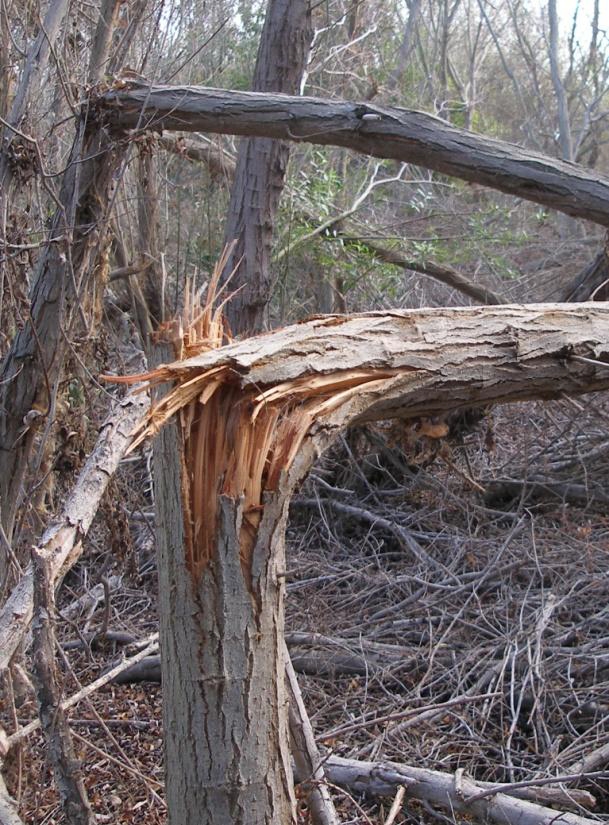Impacts of the invasive shot hole borer (Euwallacea kuroshio) are linked to sewage pollution in southern California: the Enriched Tree Hypothesis
By: John M. Bolandand Deborah L. Woodward
https://peerj.com/articles/6812.pdf
The Kuroshio Shot Hole Borer (KSHB, Euwallacea kuroshio) and the Polyphagous Shot Hole Borer (E. whitfordiodendrus; Coleoptera: Curculionidae: Scolytinae) have recently invaded southern California and are attacking live trees in commercial agriculture groves, urban parks and native riparian forests. Among native forests the worst impacts observed to date have been in the Tijuana River Valley in south San Diego County, where approximately 30% of the native willows (Salix spp.), or120,000 trees, have died as a result of a KSHB infestation. This paper examines wood densities, wood moisture contents, KSHB infestation rates, and KSHB-induced mortality rates in two willow species (Salix lasiolepis and S. gooddingii) at sites near and far from sewage input. Comparisons were made on two spatial scales: broadly among sites within San Diego County; and locally among sites within the Tijuana River Valley. The results showed that, on average, willow trees growing closest to sewage pollution had significantly lower wood density, higher wood moisture content, higher KSHB infestation rates, and higher KSHB-induced willow mortality rates than those growing farther away. We present the Enriched Tree Hypothesis to explain the link between sewage pollution and KSHB impacts; it is as follows: (A) Riparian trees subject to nutrient enrichment from frequent sewage pollution grow quickly, and their fast growth results in wood of low density and high moisture content. If attacked by the KSHB, the trunks and branches of these nutrient-enriched trees provide an environment conducive to the fast growth of the symbiotic fungi upon which the KSHB feeds. With an abundant food supply, the KSHB population increases rapidly and the trees are heavily damaged by thousands of KSHB galleries in their trunks and branches. (B) Riparian trees not subject to frequent sewage pollution grow more slowly and have denser, drier wood. Conditions in their trunks and branches are not conducive to the fast growth of the KSHB's symbiotic fungi. The KSHB generally ignores, or has low abundances in, these slow-growing trees. This new hypothesis explains current patterns of KSHB impact in San Diego County and focuses attention on the important roles of the environment and preexisting conditions of trees in determining the extent of KSHB impact .It highlights the Tijuana River Valley as an unusual site due to high sewage inputs and predicts that the high KSHB-induced willow mortality seen there should not occur in other natural riparian habitats in southern California. Most importantly, by identifying sewage pollution (or nutrient enrichment) as a major risk factor for KSHB impacts, the hypothesis ratchets down the KSHB-threat level for most riparian sites in southern California and directs attention to other nutrient-enriched sites as those most at risk.
The complete article can be found at:
https://peerj.com/articles/6812.pdf
Two newly published scientific journal articles that address SHB species delineation are:
- Gomez et al. Species Delineation Within the Euwallacea fornicatus. in Insect Systematics and Diversity, (2018) 2(6): 2; 1–11. (Attached) Richard Stouthamer and Paul Rugman-Jones, both with UC Riverside, are two of the co-authors
- Hulcr, J & Landers, J. January 7, 2019. So Many Shot Hole Borers: New research charts four nearly identical species. in Entomology Today. https://entomologytoday.org/2019/01/07/so-many-shot-hole-borers-new-research-charts-four-nearly-identical-species/
Examples of ambrosia beetle impact on willows. (A top) KSHB excavate galleries within a trunk and push the sawdust tailings out of their entrance holes. (B lower) Trees can be undermined by many galleries and snap in high winds. [These pictures show the extremes – infested trunks do not always look like A, and infested trunks do not always break, like B. Images: John Boland]

